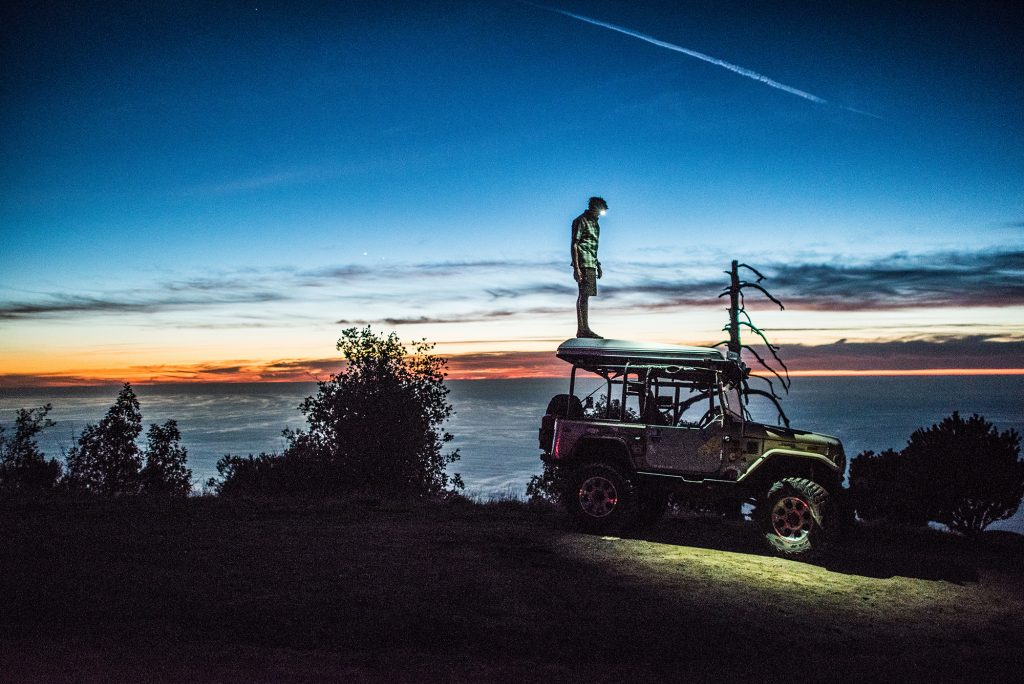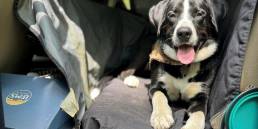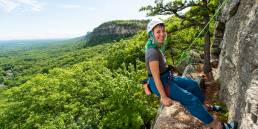Backpacking tents seem to get more high tech, weigh less, and pack smaller every year. Conversely, car camping tents get larger and deliver more living space and creature comforts while being less bulky, setting up easier, and offering more features. In spite of tents’ many advances, many outdoor people continue to use the car bivy, a tried-and-true dirtbag method for sleeping in the outdoors.
car bivy [kär bi-vē] n : The experience or act of forgoing the comfort of renting a room, or the inconvenience of pitching a tent, in favor of sleeping in the car.
To many people, the idea of someone sleeping in his or her car is pretty sad, but for a select group, the car bivy is the most practical—and least expensive—way to get close to their outdoor objectives. Whether in a campground, at a trailhead, or covertly on the edge of a Walmart parking lot, this method provides a low-cost, no-frills sleeping option.
While it may sound strange that individuals who often possess thousands of dollars’ worth of high-tech equipment, wear clothes made of expensive, cutting-edge materials, and also probably own an expensive tent (or three) would intentionally sleep in the car, it happens all the time. The truth is, by cutting corners on the cost of a motel or campsite, a hardened outdoor person can devote those funds to new boots, a new jacket, some other “must-have” piece of outdoor gear, or simply a campsite when it’s really needed.
My sleeping preference will always lie with beds. However, the practical outdoor person in me has spent a fair number of nights curled up in the back of my Subaru wagon, sleeping in the bed of a friend’s truck, or trying to get comfortable in the driver’s seat of a rental car. While seasoned dirtbags will tell you about the year they traveled the U.S. in their Saturn, I believe the car bivy is at its best when used for a day or two at most, and truly excels when you are only looking to get a few hours of sleep before an early start—for example, driving to a trailhead and briefly knocking out before a big day and an alpine start.

Picking the Right Rolling Bed
The same qualities that lead people to the car bivy in the first place are, ironically, also the qualities that ensure they will probably rent the worst possible vehicle. Before heading to Mount Hood, I knew my climbing partner and I would spend somewhere between one and three days sleeping in the car. Yet, I never let that stop me from renting the cheapest (read: smallest) model available.
When booking a rental car from the comfort of your living room, it’s easy to talk about roughing it. The reality is, it’s easy to envision yourself in the mountains, but it’s harder to picture what life will look like if you’re storm-bound in a compact car jammed with skis, packs, jackets, food, and all the other gear that coincides with a ski mountaineering trip. Sleeping in the driver’s seat is hard enough. It can be almost impossible if you’re unable to push the seat back or recline it.
Taking Care of Your Car Bivy
The crazy thing about the rental car bivy is that, even when renting the cheapest available, it still tends to be nice. I’ve never had a rental with more than a few thousand miles on it, and most would pass for new. But, it’s a shame how disgusting they are when returned after a few days of serving as a bedroom, living room, kitchen, and mudroom in the outdoors.
While on Mount Hood, we took great care not to drag too much sand and mud into the car from the parking lot. But, there was no avoiding the skis de-icing in the trunk, our boots airing out in the backseat, and heaps of layers in various states of drying draped anywhere we could find space. Oh, and as the car obviously doesn’t have a shower, after a few days of ski touring, the vehicle’s unique smell only gets more pungent. By the end of the trip, the car stunk, and despite driving around with the windows open for a few hours before returning it, I’m afraid that smell isn’t going away.
Despite all of the car bivy’s negatives, I still had a fantastic time. In fact, the moment I got back, I began plotting my next adventure—one that will most likely involve another car bivy, complete with a too-small vehicle. In the end, the disjointed sleep, weird food, weirder bathrooms, strange smells, and all the other challenges presented merely added to the adventure. Maybe, then, the reason this method has grown to prominence is, why else would you get up at one o’clock in the morning to climb a mountain, other than you have to get out of the car?
![[Credit: Tim Peck]](https://goeast.ems.com/wp-content/uploads/2016/08/bivy.png)
Tim Peck
A former child model, Tim spent a portion of his youth gracing the pages of Sunday paper advertisements for many now-defunct department stores. Living responsibility/rent-free with his parents into his thirties, Tim pursued climbing, skiing, and biking while accumulating an impressive amount of time in the mountains (and gear). Now almost grown up, he lives in central New Hampshire with his wife, Australian Shepherd, and cat. Relentlessly pursuing the dream, Tim's modest life ambitions are to ski all 12 months of the year, climb 5.12, and live in a van.
Related Posts
April 24, 2024
What to Bring When Road Tripping with Your Dog
Prepare for the ultimate road trip with…




